Similar Posts
With the goal of presenting Orthodox liturgical arts to a wider audience, the Orthodox Arts Journal participated in a large public arts event in Charleston, SC, on September 21st. The event, the annual OPEN Arts Expo, is produced by the Charleston Regional Alliance for the Arts, which promotes non-profit arts organizations, and of which the OAJ is a member.
The expo was held at a beautiful square in the downtown Charleston historic district, on the campus of the College of Charleston. There were fifty different arts organizations represented at booths, ranging from small artist cooperatives to major art museums. There were also theatrical troupes and music and dance schools, which offered performances throughout the day. Over two thousand people visited the event.
Orthodox Arts Journal was the only organization present with a liturgical or religious focus. In many ways, our participation was an experiment to see how liturgical arts might be able to fit into the energetic and secular arts community of Charleston. We felt that our presence was very well-received. We had good conversations with the public and with other artists, and were surprised to find that most of them had some personal connection to the Orthodox Church. Apart from several actual church-going Orthodox we met, there were many non-Orthodox who knew a good deal about the church or iconography from family connections or travel in Eastern Europe. So the art we had on display was not quite so ‘foreign’ to Charlestonians as we might have expected.
In the future, we hope to expand on this good beginning by organizing a major show of contemporary iconography to be displayed at one of Charleston’s art galleries. The event will coincide with a series of concerts and liturgical arts lectures at the local Orthodox churches.
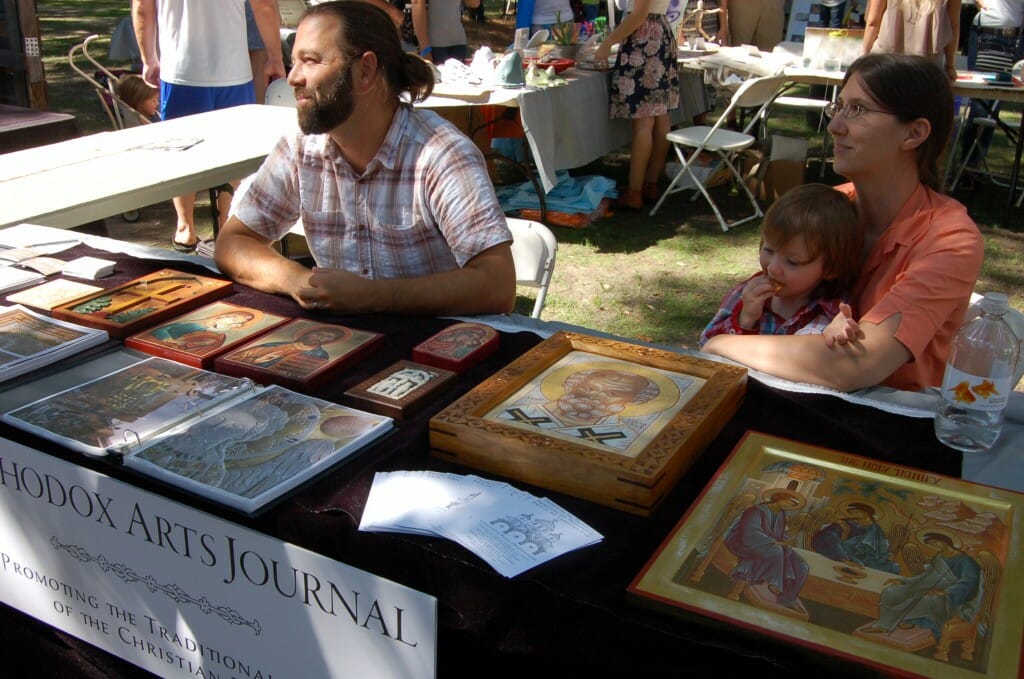
We displayed icons made by Ksenia Pokrovsky/Anna Gouriev, Andrew Gould, Angela Ludosanu, and Jonathan Pageau. Materials included carved wood and stone, mosaic, egg tempera, and silicate paint.

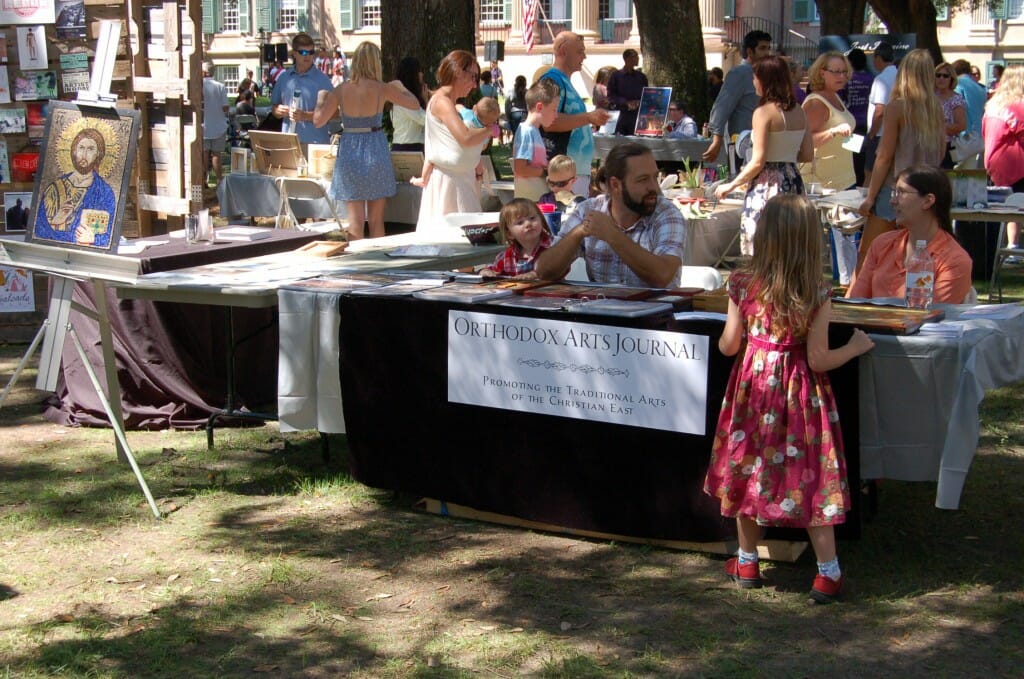
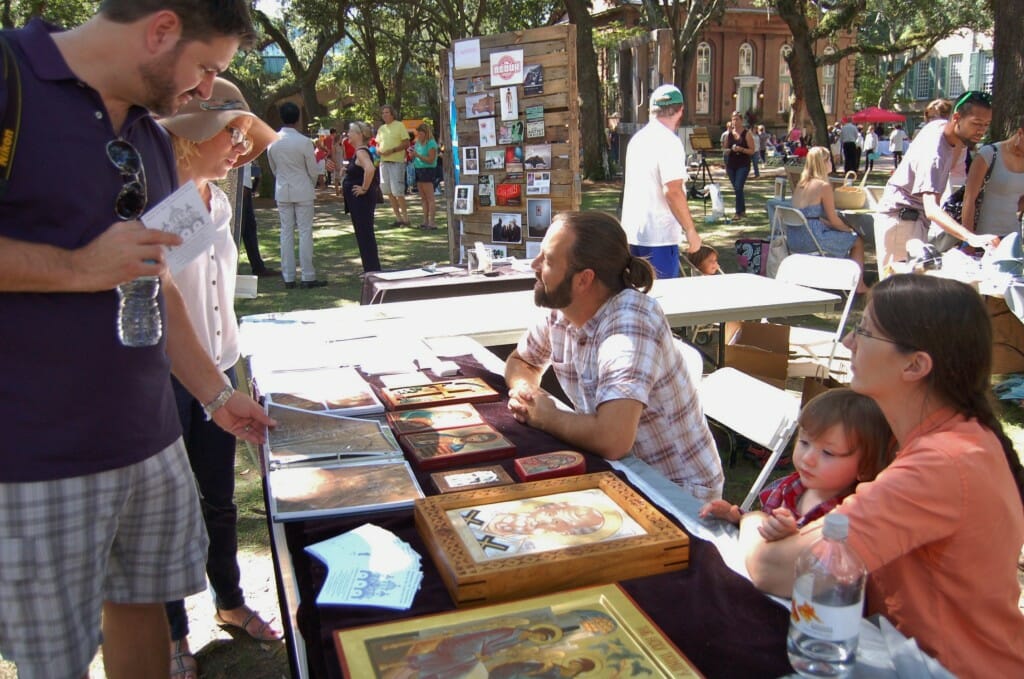
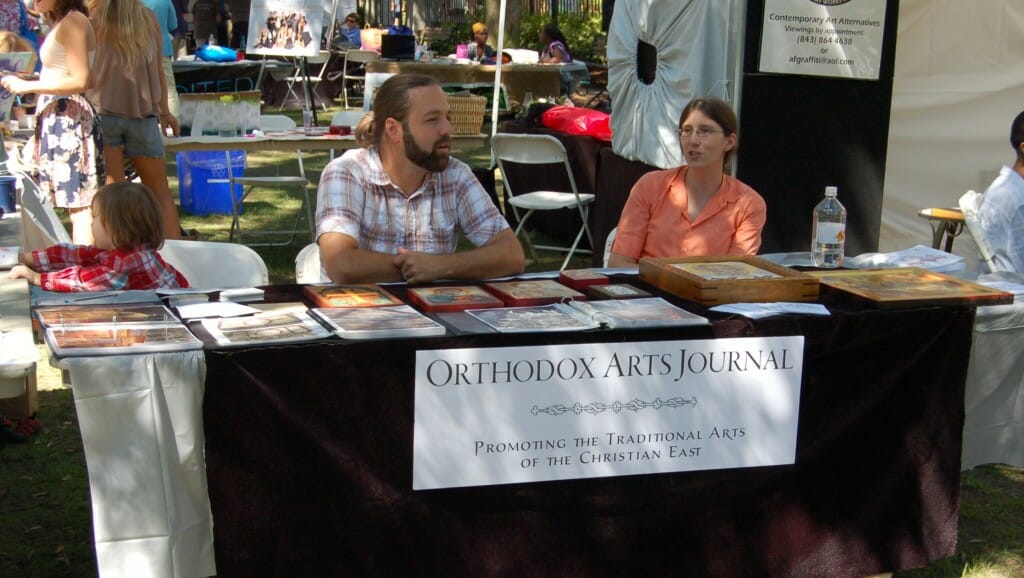
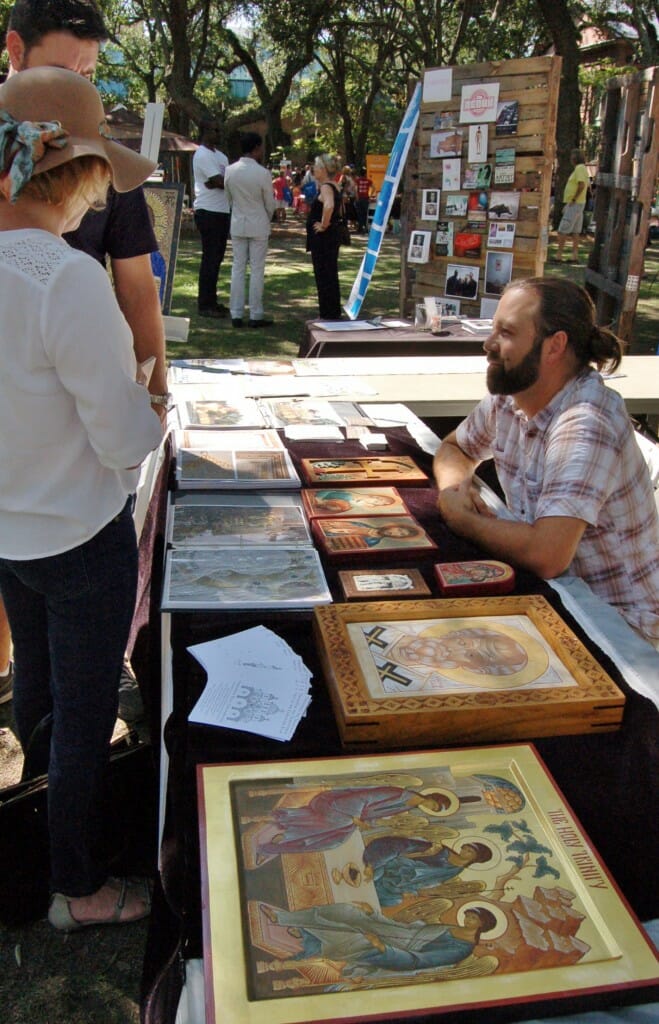
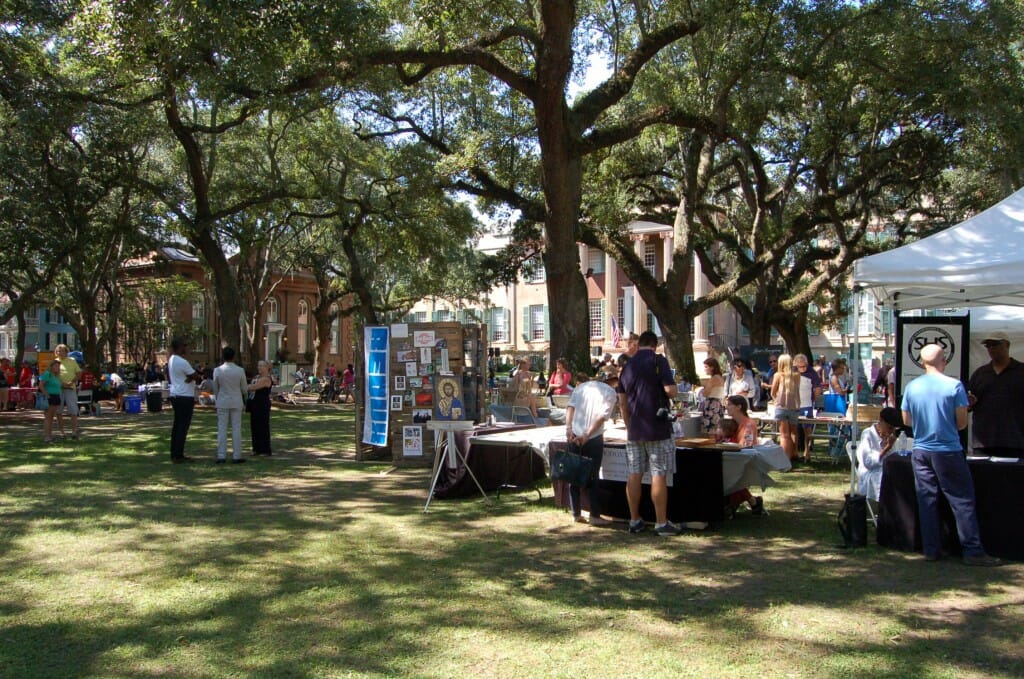
Excellent idea to promote Orthodox Art.
I am interested in your mention of silicate paint; did some research on the term, and understand the usage, but is it readily available for artists? perhaps to be made at home using dry pigments and appropriate binder? Thank you for any help! Joh
There has been a great revival of silicate paints in recent years, and they are now widely used by iconographers who paint walls in both Russia and Greece. Iconographer Vladimir Grygorenko has been instrumental in developing and popularizing the method, and there is a chapter about it in Aidan Hart’s book on icon painting techniques. I recommend it for all the churches I design, and the apse mural in my church in Charleston (Holy Ascension) was painted with silicate paints by Dmitri Shkolnik and Sasha Chornii. The paints are available from Keim Mineral Coatings of America, either as bottled paint concentrates or as binder solution only.
Thank you for the information, Andrew. I have Aidan Hart’s book, will look more closely for details on the paint. Appreciate the source information as well. John
What a pleasure reading this article! Your article gets right to the point of what the OPEN Arts Expo is all about – introducing people to new art forms and organizations, connecting arts organizations with each other, and celebrating the arts in the Lowcountry as a whole! We are proud to have the Orthodox Arts Journal as a member of the Arts Alliance and look forward to continuing to work with you!
Mother Katherine WESTON in indianapolis also participated annually in that local arts festival, called Penrod, which is always on the Saturday after Labor Day. She would participate as the local icon-making guild, with demonstrations of icons completed or in process by her and her students and demonstration of icon-painting. It was always well-received, and sometimes new students would enroll years later, remembering what they saw at Penrod. Here in DC, where I now live, there usually is at least one local iconographer at the local ethnic food festivals of the Orthodox churches. Hurray! Great work, one and all!